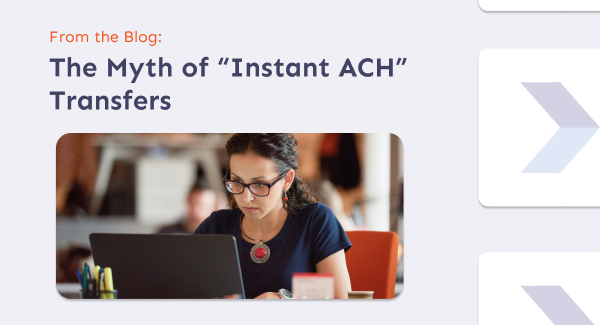Paycheck Protection Program Loans – How to Calculate Average Monthly Cost

Paycheck Protection Program Loans are 100% federally guaranteed loans provided by Small business Administration under the Coronavirus Aid, Relief, and Economic Security Act (CARES). This program provides potentially-forgivable loans to small businesses to maintain their payroll and other operational expenses during the COVID-19 pandemic. If you’re unfamiliar with the PPP loan and know how you can apply for one, please refer to our prior article here.
If you’re a small business owner who is planning to apply for a PPP loan then you must know that these loans are calculated using the average monthly cost of the salaries of you and your employees. It is one of the most important yet confusing parts of your loan application where you can make a lot of mistakes.
Wondering how to accurately calculate the average monthly payroll used for the PPP application? Here is a step-by-step guide that you can follow to ensure that your application is submitted successfully and get your money faster.
Provide the Necessary Documents
Although calculating the average monthly cost to enter your application is a simple and easy process, lenders need to see the prioritize documentation and they will probably organize applications that are finished and prearranged. Once you submitted your application form through a lender, you will be asked to submit the necessary documentation to finalize your application. Though these documents are not required initially, it’s a smart idea to upload them as soon as possible to ensure your application is complete and successfully processed.
Depending on your business and lender, the PPP requirements may change over time. We’re provided a comprehensive list of all the documents you’ll likely need to successfully apply and get a loan.
Payroll Documentation
- Payroll register for the full 2019 year or all available months in 2020
Tax Documentation
- IRS forms 940 and 941
- Payroll summary report with corresponding bank statements
- Breakdown of payroll benefits (vacation, allowance for dismissal, group healthcare benefits, retirement benefits, etc.)
- 1099s (if you are an independent contractor)
- 944 annual tax filings for 2019
ID Verification
- Color copy of a government-issued ID (front and back) for all owners listed on the application.
Calculate Loan Amount and Gross Average Monthly Payroll
Now that you’ve submitted all the necessary documents to successfully qualify for a PPP loan, the next step is to calculate gross average monthly payroll which determines that loan amount you’ll be eligible for. But before moving ahead, you need to know what remuneration is viewed as qualified payroll costs and what mistakes to avoid under this program.
What to Include:
- Salary, wage, commissions, or similar compensations
- Utilities such as electricity, gas, water, transportation, phone and internet access
- Payments for group health care benefits, including insurance premiums
- Mortgage interest and rent payments
- Payment for sick, vacation, parental, family, or medical leave
- Additional wages paid to tipped employees
- Payments of any retirement benefits
- State or local tax assessed on the compensation of employees
What to Exclude:
- Any salary in excess of $100K
- Income tax, payroll tax or railroad retirement tax
- Any compensation for employees outside the US
- Sick leave or FMLA leave for which a credit is available under the Families First Coronavirus Response Act.
- Federal employment taxes imposed or withheld between February 15, 2020, and June 30, 2020, including the employee’s and employer’s share of FICA.
Borrowing Limit
You can borrow up to 2.5 times their average monthly payroll costs, not exceeding $100K per employee and $10 million per business.
Time Period Used
It’s vital to use the correct timeframe to perfectly calculate average monthly expenses. Depending on your business types (regular, seasonal or new business), you can either use the calendar year 2019 or last twelve months. Don’t forget to check the timeframe recommended on the PPP application under the “Instructions for Completing This Form” section to calculate your average monthly payroll.
An annual salary of $100,000
Compensation at the small business’ payroll exceeding more than $100,000 per year will not be eligible for relief under the PPP.
The Math behind the Calculations
When you have the aggregate sum from those above-listed expenses, you need to take that number and divide it by 12—this gives you average monthly payroll costs. After that, take that new number and multiply it by 2.5. This new outcome is the most extreme sum you can get on your PPP loan, topped at a sum of $10 million.
Let’s for the past financial year, you made $60,000. Going through the steps would look like this:
Step 1 – the aggregate payroll costs from the last 12 months – $60,000
Step 2 – Calculate average monthly payroll costs by dividing the total amount by 12
$60,000/12 = $5,000
Step 3 – Multiply the average monthly payroll costs by 2.5
$5,000*2.5= $12,500
So your average monthly payroll costs are $5,000 and the maximum amount of your loan is $12,500. Above are just simple calculations and if you have received SBA EIDL after 1/31/2020, that amount need to be adjusted up to 10K.
Submit your PPP Loan Application
Look no further than Forwardly to submit your PPP loan application seamlessly. You can apply through Forwardly using our online application and we will help your business get faster access to these funds through our network of SBA-approved lending partners. If you have a good relationship with a traditional bank, regional bank, online lender or credit union that is accepting the application, it’s a great idea to go with them.
| Want to get better loans for your business? Forwardly helps you showcase your business potential in seconds, so you can get more cash and pay less interest. Sign up now for free. |
Image: GraphicStock.


